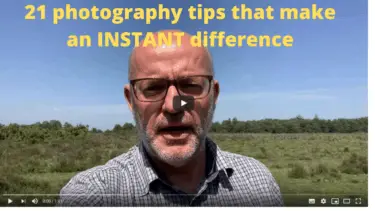I have been learning photography for well over 35 years now. In this post I am going to share some of that knowledge with you.
21 photography tips that make an INSTANT difference will really do just that. I tell you not to worry about gear, learn composition, get off your computer and get out and take more photos and lots of other ideas to help you take better photos. I also tell you a brilliant time saving tip which I learned the hard way! And a great money saving tip too!
Don’t worry, this post is full of things that you can do right now that will really make a difference that I have learned myself, and not a load of hard to understand technical stuff.
Trust me, I have been doing this all my adult life.
I wish I had know all this years ago!
These are 21 things that I really wish I had known when I started taking my photography seriously, with a view to be it being my primary source of income, which for me was in 2007.
I hope that you find these 20 things useful – please get back to me with any questions or comments. Sorry the 21st thing is a list.
These are all my own opinions, and are based on my personal experiences
A lot of these points are interrelated, and things will get a mention more than once, but at the end I will summarise with 10 key points what I have written about in this blog post.
They are in no particular order, just the way things came out of my head. And the way things come out of my head can be rather unusual at times!
One more thing
Please be aware that some of the links in this post are affiliate links. If you click on one of these links and buy the product I will get a commission. You don’t pay any more, Amazon and others just get a little les.
OK – lets get into this.
1 – Don’t worry about the gear
This is quite a big one for me.
Get the best gear you can, but don’t break the bank. That is the first general point I want to get across to everyone getting started in photography.
I have less gear now than at any time since I got into photography seriously.
And to be honest this applies to all of us at all stages of our journeys. In my humble opinion there is too much talk about photography gear.
And yes I am guilty of this myself.
I have been using my Canon 6D for well over 5 years now, and it still produces great images. I have images in my portfolio that were taken with my 12 mega pixel Canon 5D. And do you know what – you cannot tell that they were taken with a 10-year-old camera? Well I say 10 year old camera….
How old is the Canon 5D? This might shock you – it was announced by Canon on 22nd August 2005.
2005!!!
13 years ago.
Do my clients care about my gear?
My clients are not interested in my gear – all they care about is the images that I produce for them. I have never been asked (other than in passing interest by a client with an interest in photography) about the cameras and lenses I use.
Don’t worry about the gear – get the best you can afford and learn to use it.
And another point – don’t take all your gear with you wherever you go.
I have my day to day go to gear in my Peak Design Everyday Backpack. This is a small 20 litre bag.
It looks like this.
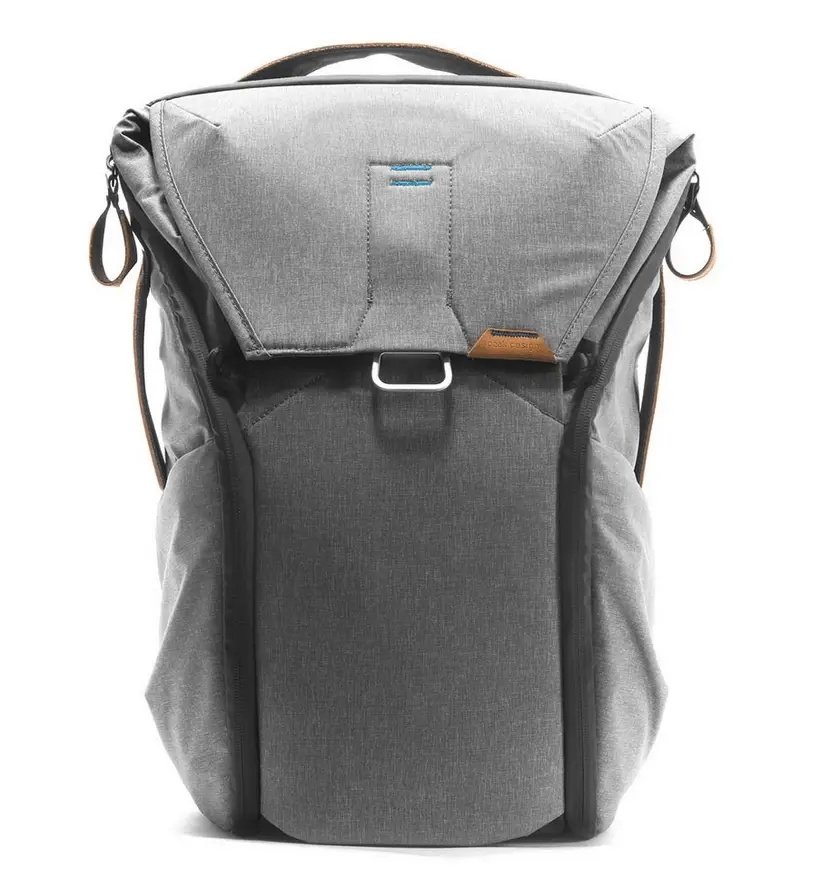
In it I carry the following gear
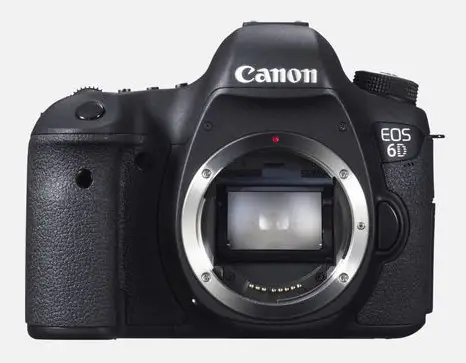

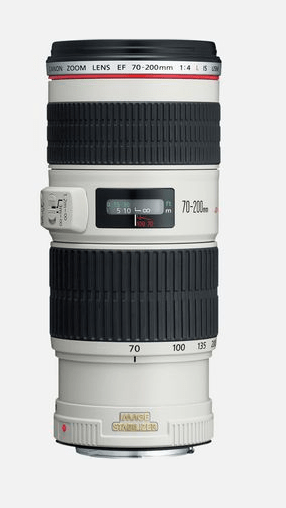
And a few other bits – memory cards, spare batteries, a Platypod and ball head, a couple of key filters, a grey card, colour card, cloths and wipes.
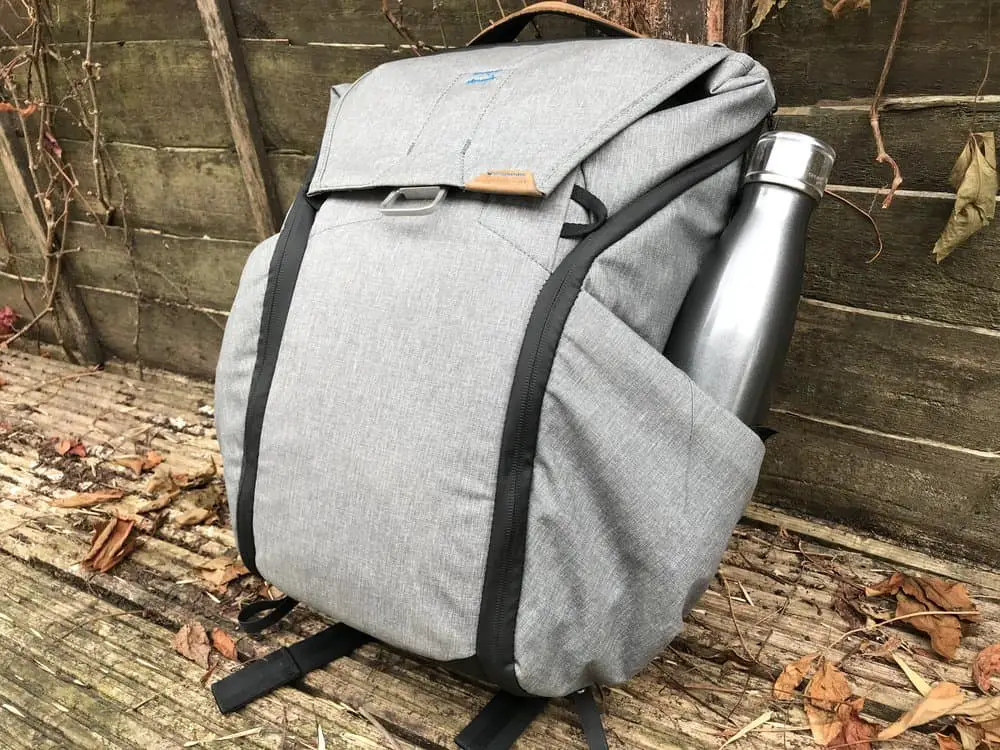
Manfrotto 190 Go tripod (which fits in a side pocket and is strapped in place) with geared head
Not forgetting my Neewer Loupe Viewer which fits in the middle of my bag in a small tupperware box.
And my trusty drinks bottle – here it is nestled on the other side of my bag.
And that is the core photography gear I use 95% of the time.
My old Peak Design Everyday Backpack on location in Santorini
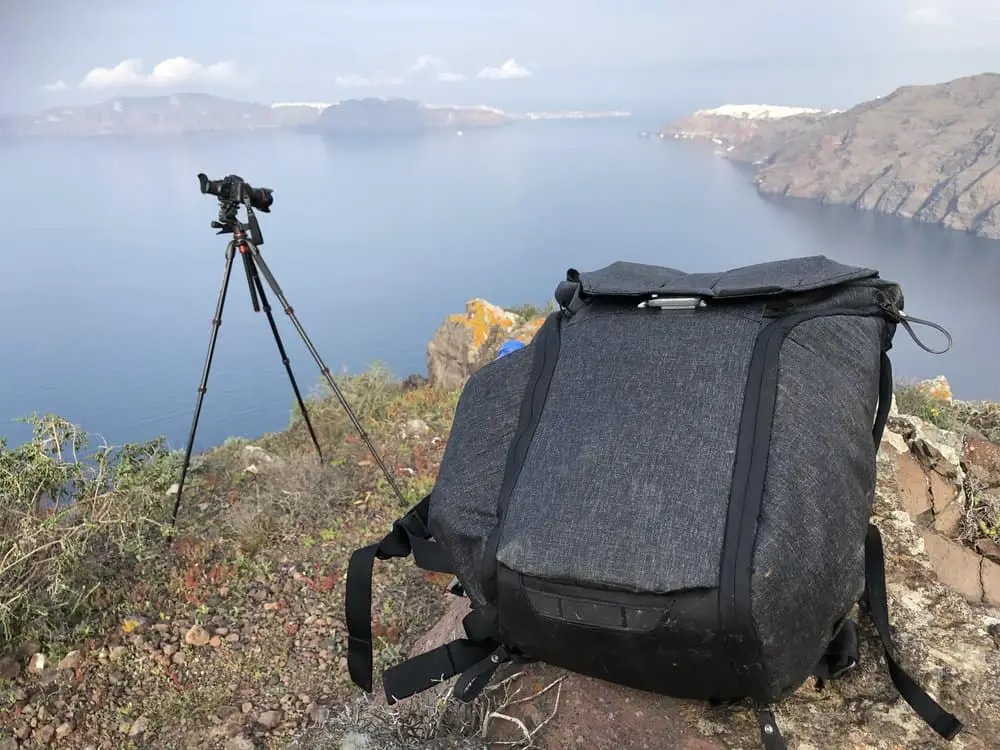

You don’t have to spend a fortune on gear
I have written an article which you can read on the Improve Photography website called Full frame DSLR photography without breaking the bank – this is how I do it
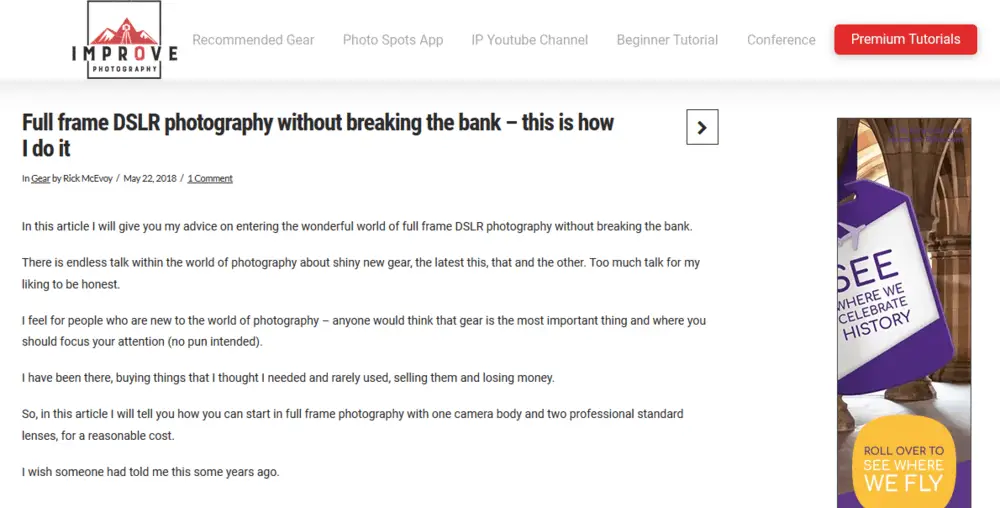
OK – lets now save some money.
2 – Second hand gear is fine
The first full frame DSLR I bought was a Canon 5D. I bought it in 2007 on EBay from a photographer who had bought the camera new, and had not had it long but had a change of heart and wanted to stay with medium format.
The camera looked new, and all the packaging was there. The only difference was that the box was not sealed, and I did not get a receipt and 12 months guarantee.
I have upgraded since to a Canon 6D.
Quick piece of advice – when you buy a camera save all the packaging for when (if) you sell the camera – you might not get more money for the camera but it will be more attractive to a buyer than one without. And you might get a higher bid you never know.
That camera worked faultlessly for me in my formative years as an amateur photographer, and I used this great camera on my first commercial photography job, and many subsequent commercial jobs.
I used my Canon 5D on this shoot, photographing the extension and new entrance to St Anns Hospital in Poole for Vinci Construction.
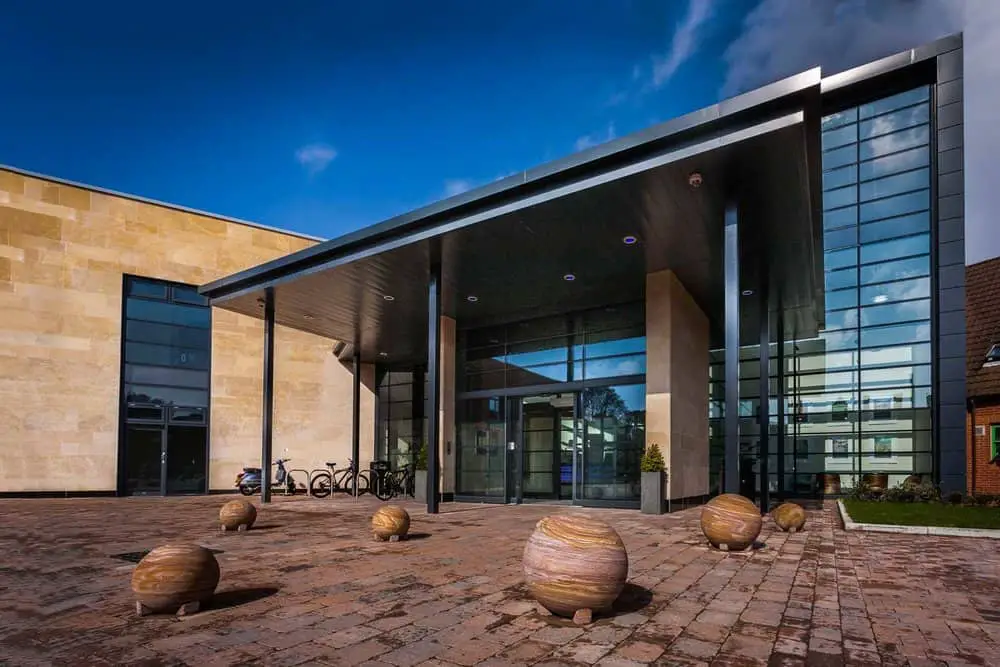
Acccording to Lightroom I took 12,000 photos with the Canon 5D.
And I only upgraded after a problem caused by me. One for another time….
Let’s talk about lenses
I have lenses that I bought new, and lenses that I bought second hand. And can I tell them apart? Not really no. Of course, I know which are which, but in practical terms they all produce great results.
And a slight aside here but an important point all the same – lenses hold their value incredibly well. Lenses are a great investment – I sold a lens five years after I bought it and got more than I paid for it.
3 – Learn about composition
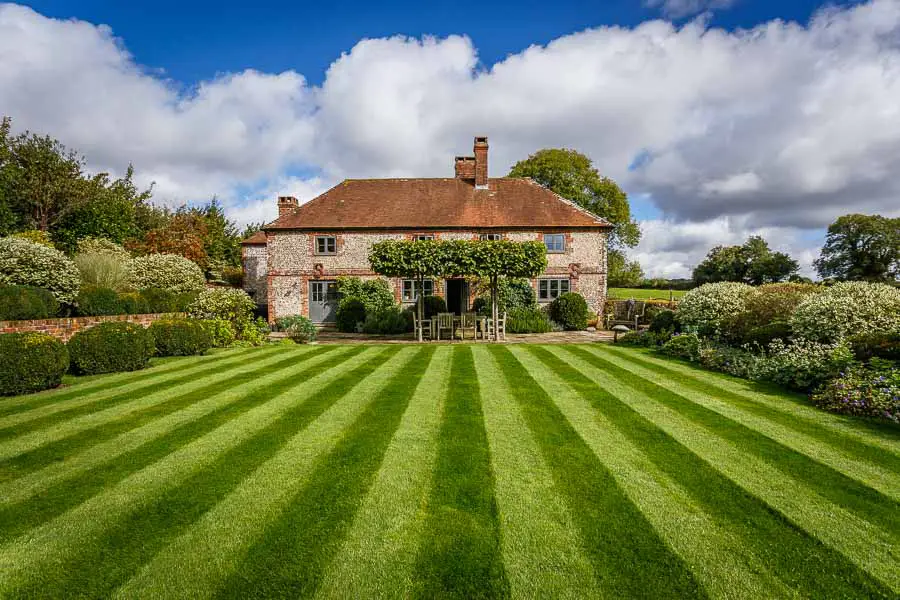
Please do this. I didn’t give composition enough importance back in the day.
I was too busy looking at what gear to buy next and taking photos without really thinking about composition.
What happened?
This is what happened.
I got bored with producing average photos.
I bored myself to be honest. And this was when I started to think about my images, what I didn’t like about them, and how I might make them better.
I stopped obsessing about my gear, and instead concentrated on the pictures themselves.
How I started to think about my photography
I looked at the work of the best photographers, read books and took the time to critique my work. It was at this time that I submitted my first portfolio submission to the BIPP – that is the British Institute of Professional Photography.
My first submission was a complete revelation – a Hasselblad Master called Bryn Griffiths very kindly and patiently critiqued the images I sent him. I had to rethink my submission, and quite a few of the images were removed from my portfolio and replaced with images that worked better.
I will say that again – a Hasselblad master critiqued my photographic work!
This was the beginning really of my realisation of what really matters in photography.
Composition is king.
Get the composition right and you have a great photo. This is a photo that could be taken on the best DLSR, a lovely Hasselblad, an iPhone, a point and shoot – any camera.
But a rubbish composition is a rubbish composition, and probably a rubbish photo, whatever the camera.
If you take away these two things and these two things only this I will be very very happy.
Forget the gear – Work on Composition.
To continue with the portfolio thing and the BIPP, I had my second portfolio assessment at the BIPP – this time for my Associateship.
Associateship is defined by the BIPP as
“A high standard of craftsmanship and creative ability”
And all those years on from the initial critique, all I was asked to change by Bryn was the white balance to some of my interior images – that was it. No images were changed. And the edits were commercial images issued to clients.
I have worked very hard on improving the quality of my images, and this is the result.
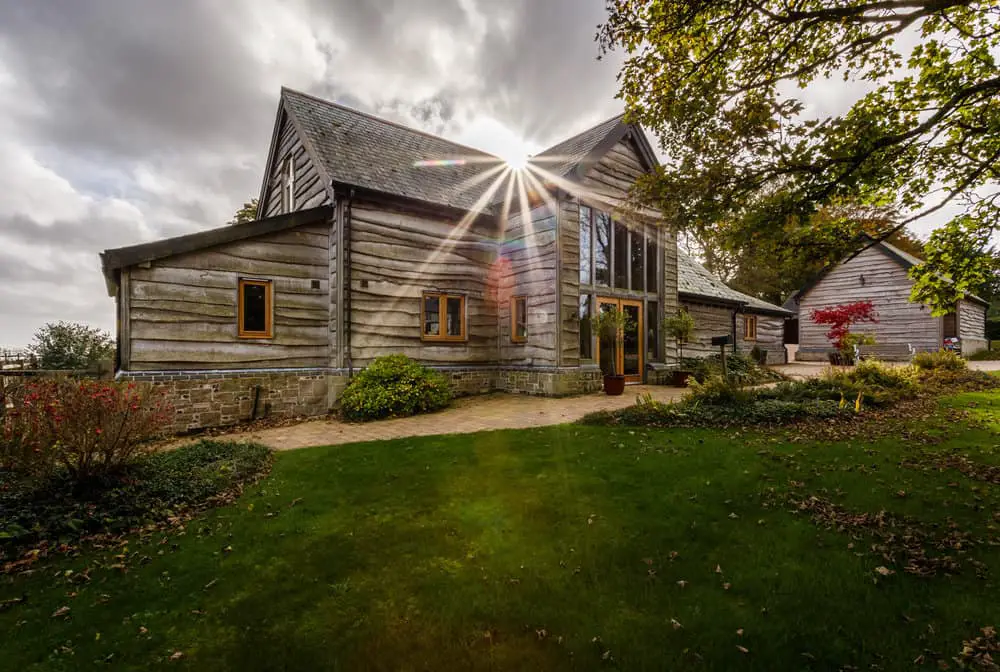
RICK MCEVOY ABIPP
I got my Associateship – I am now an ABIPP. And one of the points of feedback was the observation that I did not appear to crop many, if any, of the 40 images submitted. I had not thought about this, but it turns out this is the case.
I rarely crop an image. Like I say this is not a deliberate ploy, some attempt at a certain style, trying to be different.
No – this was pointed out to me and is the logical conclusion of the work I have done to date on my composition, and also taking the time and care when capturing images.
And also in this process my own individual style emerged for the first time.
I will talk about my professional qualifications later on in this post.
4 – Get off your computer and get out there
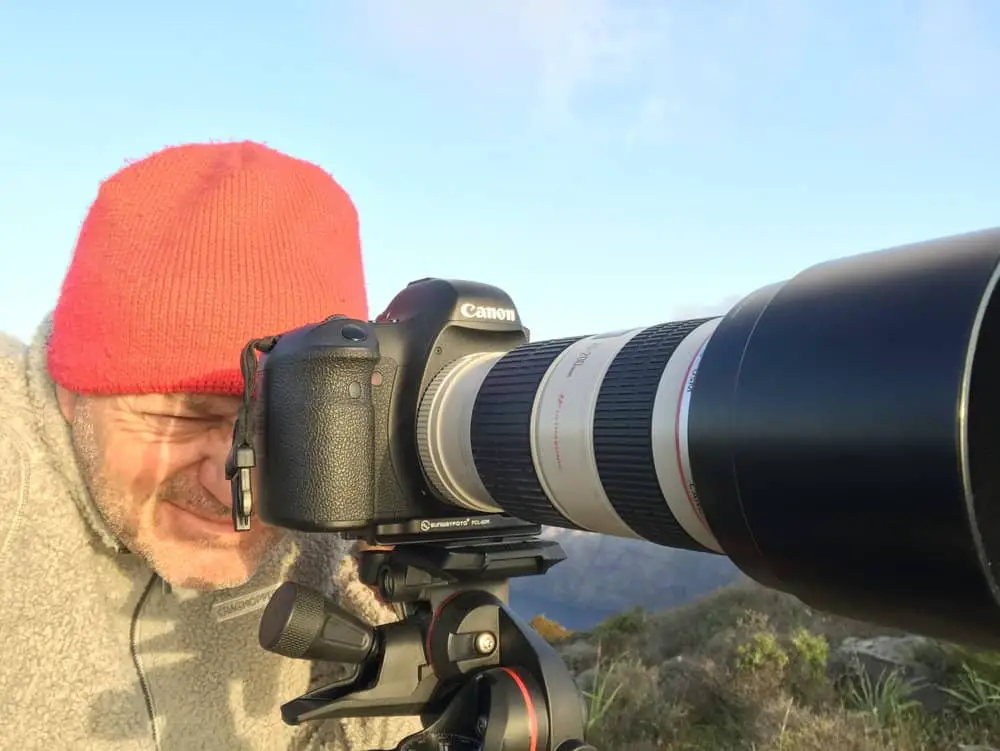
Another mistake I made. Rather than getting out there taking photos I spent too much time working on photos in Lightroom and then even worse doing nothing with them.
And lots of time backing up!!!!
Now I know we all need to practice to learn Lightroom but please give this some thought – apply some structure to your learning and you will progress in leaps and bounds.
Do not do what I did, which basically was keep on doing the same things to more and more images, or you will stagnate. And with stagnation comes frustration and the risk of going off photography.
And whilst learning Lightroom don’t but any plug-ins. I did.
And do I use them? Some yes, but most no. Another waste of my money.
What is photography all about? Taking photos. Like this.
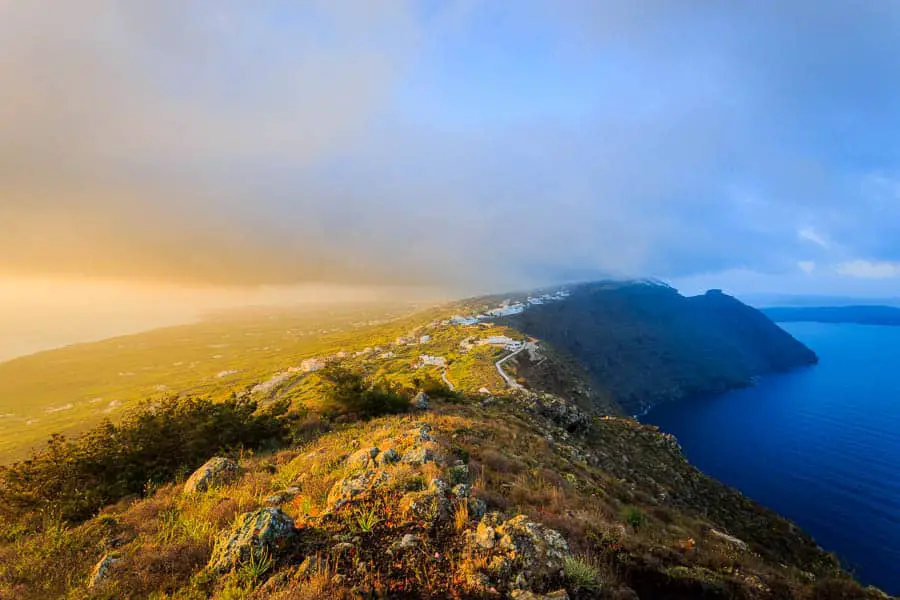
Being out with a camera is a joy that we should all embrace more than we do.
I spend more time writing these days than I do taking photos – an occupational hazard – but when I get the opportunity there is nothing I enjoy more than sitting waiting for the sun to rise, or setting up my tripod to take a considered photo of a stunning building.
Even more of a joy when you have a lightweight backpack and are not burdened with 50kgs of back-breaking stuff!
Photography is a pleasure that should be enjoyed in my opinion, not a technical exercise or way of emptying my/ your wallet.
5 – Take less photos
I know – this seems to contradict point 4.
Take less photos?
Let me explain. Get out more, take the shots you want, work the scene by all means. And then move on.
Get out more to take photos, but take less photos when you are out there.
It took me a while to realise that I was taking the same scene more than once. On architectural shoots I would work in a logical order around a building, and then at the end if I had time photograph as many things again from the beginning.
I think it was a lack of confidence at the time. And I never used any of the images I took again – the ones I took on the first place were without exception better.
This is something that I have looked into – pretty much without exception the first image I have taken on any kind of shoot is the one I use.
These days when I am working on an architectural shoot I aim to capture as few images as possible. I photographed a very famous persons house the other month, and for the internals I took one or two shots per room.
I took the time to get my composition bang on for the views needed and that was that.
This of course relates back to the point about composition – take the time to get the composition right and you don’t need to move three feet to the left to take the same scene from a very marginally different viewpoint.
And the way I take and process photos I rarely have to worry about my exposure. For me it is all about keeping things simple.
Take less photos and you will thank me when you are going through your photos in Lightroom, or whatever software you might be using.
I hate having to choose between virtually identical images – I absolutely hate it.
I love going through an architectural shoot and picking consecutive images as picks to edit. This tells me that I was working at my optimum.
The higher the percentage of image captures to keepers the happier I am!
6 – Take more photos in interesting places. I will qualify this at the end somewhat.
I am not saying get out and photograph the most often photographed locations. For me that would be Durdle Door, which I have photographed twice. If I want to look at a photo of Durdle Door there are thousands of images out there.
Is another picture of Durdle Door done by me needed?
Not really…..
No – get out to interesting places, not necessarily those that would feature in a “10 stunning photography spots in Dorset England” kind of thing.
Take this shot, which was taken one New Year’s Eve afternoon at my local woods, which to my shame I had never been to before. In that one afternoon I get some really great stuff, and no-one knows or indeed cares where I took the photos.
All people care about is the photos themselves. Yep – I am back to the composition.
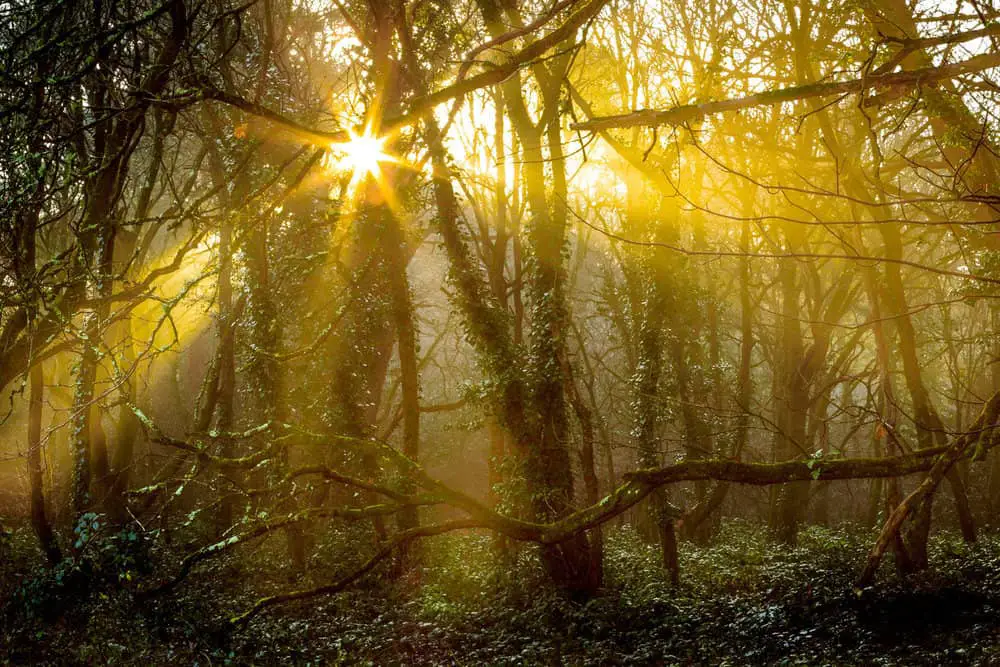
Delph Woods, Poole – landscape photography in Dorset
This photo was actually taken at 4pm on New Years Eve 1 mile from my home!
Do not restrict yourself to the headline locations. I hear tales of lines of photographers at the headline locations standing shoulder to shoulder all taking the same image! This sounds horrendous to me.
Go to places others don’t go, find things to photograph. Be original.
I find that I am the only one at a location when I am taking photos. Just how I like it.
7 – Forget layers in Photoshop (and stick to Lightroom)
Controversial!
Seriously. I don’t use layers. I have a couple of times for sky replacements, which I try to avoid doing, but apart from that I don’t get layers. I have Luminar 4 now for sky replacement.
I will say that again – I don’t get layers, and have not worked out why I would need them for the photography work I do? Maybe I just don’t need them.
I am quite a literal person – I struggle to understand things if I have no use for them.
I wrote about this on Improve Photography – check out These are 5 things I use Photoshop for – no layers required! which I got a bit of stick for!
I use Lightroom
I process my images in Lightroom. I only go into Photoshop to remove things that I can’t remove in Lightroom. I have spent hours and hours trying to learn Photoshop – the problem was that I did not have a need for Photoshop, so I was trying to learn something I did not actually need.
All I use in Photoshop is the following
- Clone stamp tool
- Patch tool
- Healing brush
- Content aware crop
- And I resize images if I need them printing at specific sizes
I have nothing against Photoshop – I just find it hard to naviagate and use, and there are so many options it is hard narrowing it down to the things I need. I feel for any new photographer trying Photoshop for the first time and staring at the monitor with no clue what to do next – I can remember that feeling too well.
I am happy with Lightroom thanks. I dont know how to edit images in Photoshop. And I dont care!
Here is why I can get away with only doing these things in Photoshop, and why I don’t need layers.
I do as much of my image editing in Lightroom, but sometimes I need to go to Photoshop to carry out some of the thnigs I listed above.
When I need to go into Photoshop I select Edit in Photoshop, and Lightroom sends the image to Photoshop. Once I am done I hit save and the image appears next to the original image sent to Lightroom.
The new file with the photoshop edits is a brand new Tif file, the original Lightroom file is exactly as it was before being sent to Photoshop.
I therefore do not need to worry about undoing the work I have done in Photoshop, as it is so minimal I can just do it again and produce another new Tif file. If you work in layers in Photoshop you can (apparently) go back and undo stuff (as long as you have edited the photo and saved as a PSD file).
This is why I don’t need layers, and why it doesn’t bother me either. Any work done in Photoshop is saved to a brand new file, leaving the Lightroom edit where it was. And there is not that much to undo.
Non-destructive editing to the max!
8 – Start your photography journey with Lightroom

Lightroom is fantastic. I use it all the time.
And I suggest you should too.
I have been using Lightroom for well over 10 years now and can honestly say that the latest version of Lightroom is the best yet. I have been using Lightroom since version 1.0.
Get Lightroom. Learn Lightroom.
Don’t try anything else. Not yet.
To begin with, once you have Lightroom, put all your photos into a single catalogue in Lightroom. Then you can use Lightroom to organise your photos – the Library Module is incredibly powerful, and as far as I am concerned is the best software to use to manage your photos.
Let’s think about this for second – once you have all your images in Lightroom why would you edit your photos anywhere else?
I do as much of my editing as I possibly can in Lightroom – if I can edit an image in Lightroom and not go anywhere else to do more work I am a happy person.
Get as much RAM as you can
A point of digression here – I have just upgraded the RAM in my Dell PC to 16GB from 8GB and it has made a massive difference to Lightroom. In a Lightroom Classic upgrade performance improvements were added, but you needed 12GB or more to benefit from these improvements.
Get more RAM and get to know Lightroom and Lightroom only – you will thank me for this trust me!
If you can survive without Photoshop then happy days, but if you feel the need then I can recommend this book which I am going to get.
The Photoshop Toolbox: Essential Techniques for Mastering Layer Masks, Brushes, and Blend modes – released 28th November 2018.
The book is written by Glyn Dewis, a British photographer, and I will copy a bit of the extract from Amazon which I like
“Adobe Photoshop is one of the most powerful image-editing applications ever created, but it is also widely thought to be difficult to learn, infinite in scope, and nearly impossible to master. For these reasons, many photographers choose to stay exclusively with Lightroom for all their photography needs. But for those photographers who subscribe to the Adobe Creative Cloud Photography plan–which includes both Lightroom and Photoshop–to leave Photoshop unopened and unexplored is to deny yourself the ability to take your creativity and expression to a whole new level.“
9 – Learn Lightroom properly before trying anything else
Going on….
I started using Lightroom, and at the same time discovered the wonderful world of plug-ins and other photo editing software. Well it was a whole new world to me. I bought the following
- Photomatix Pro
- Topaz Labs
- On One Perfect Suite
- Nik Collection
- PT Gui
There are probably some others I bought which I can’t even remember.
And I played around with them, without ever mastering any of them. Well I did get into the Nik Collection, mainly for black and white conversions, but that pleasure was taken away from me!
And this was at the same time as trying to learn how to use Lightroom. I mean trying as I was so distracted.
And when I got an iPad Pro I got even more stuff. Another new toy shop of stuff.
Now I am working as a professional photographer what software do I use?
- Lightroom
And when needed
- Photoshop
And
- Lightroom Mobile
Lightroom Mobile is an essential tool, which syncs with Lightroom Classic on my desktop. And this means I can access the photos I need to anyhwere on my iPad and phone.
Brilliant.
And I use Luminar 4 for sky replacement work.
That is all I use for editing images – nothing else.
10 – Get honest critiques of your work
I mean people who know what they are looking at. I don’t think that family members are the best people to critique your work – they love you after all (well I hope that do) and will not give you an honest critique.
So don’t ask them. Ask someone who knows what they are talking about who can be completely honest with you.
Social media is a minefield, and not to be relied on for feedback on images.
You have to remember that people scrolling through endless photos are probably liking your photo in the hope that you will see this and like one of theirs. And they have liked many other photos, giving each one equal time, care and attention – a second if you are lucky.
Find someone who you can trust to critique your work. I use the BIPP for this, and I write about this elsewhere in this post.
And when you have had a critique from someone who knows what they are talking about it is very very important to act on that critique.
This is another important point – learn something, then make sure you act on it. If you don’t act on something you learn you might as well have not bothered learning it in the first place! This is another thing that I have learned from experience – now I listen to much less stuff and act on the good stuff that I learn that will help me take better photos.
11 – Join a professional body
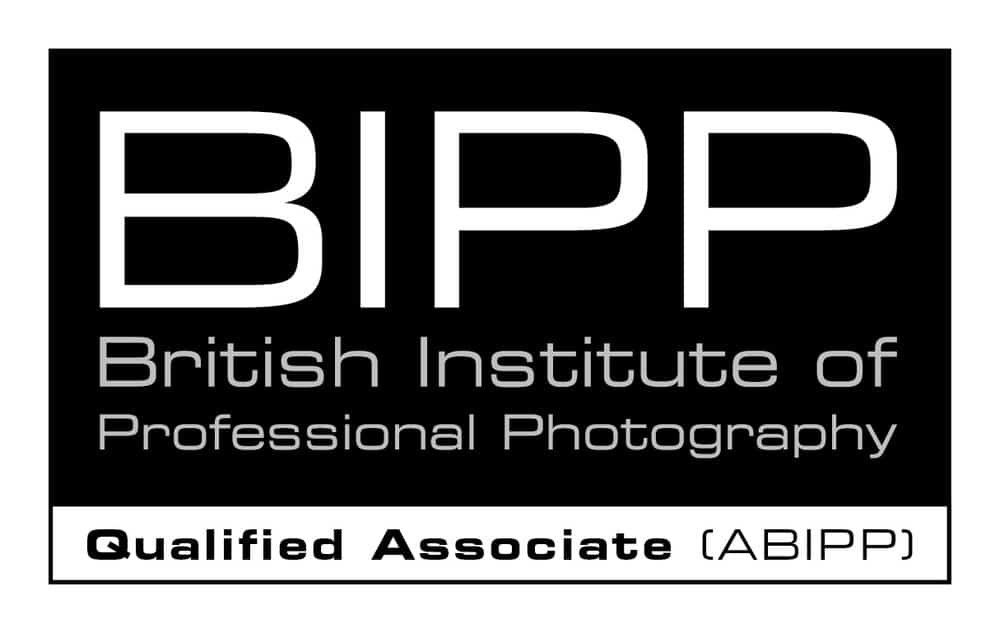
I am a firm believer in professional bodies and professional qualifications. I have been a Chartered Member of the CIOB, the Chartered Institute of Building – MCIOB. This is the benchmark professional qualification for construction management professionals.
And I am proud of this fact.
I was a member of the SWPP for some time – this is the Society of Wedding and Portrait Photographers. Not an obvious choice for me, but this was in the early days of my journey into professional photography.
Now I am sure there is nothing wrong with the SWPP, but I left having not got a lot out of my membership.
Like I say, nothing against the SWPP – the convention they run in London is pretty fantastic to be fair. It is just that I joined the SWPP at the time that I was all over the place.
And when I began to focus my attention
I came across the BIPP – the British Institute of Professional Photography. I applied to join the BIPP, and to get my first qualification I had to submit a portfolio which was critiqued, rejected and worked on quite a lot before it was of a standard for entry level membership, LBIPP – Licentiate of the British Institute of Professional Photography.
This qualification is described by the BIPP on the qualifications page as
“Entry level qualification, showing an established professional level of skill and competence”
It took me a while to get a set of images to this standard and was the first professional critique I had experienced.
I found this a really difficult process, as I did not really know what I was doing. Thankfully I was helped through the process.
That was then, and now I have managed to upgrade my qualifications.
I have now achieved my Associateship, ABIPP. This is defined by the BIPP as
“A high standard of craftsmanship and creative ability”
It was much easier to select the images for this submission. I tried to do this a couple of years ago, but I was not happy with the standard of my work.
I had a much better set of images, and had learned a lot since that first submission.
Not only do I get qualifications and recognition of the level of my work, the BIPP provide great information and the magazine they produce I read cover to cover every month. And I don’t read much else thinking about it.
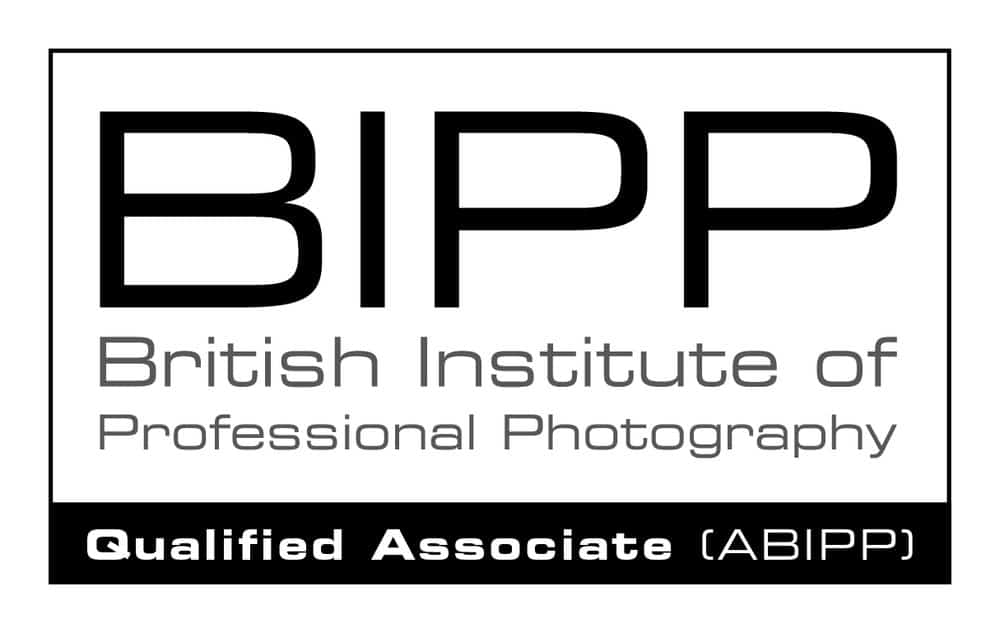
Join a professional body – one that is relevant to you and the photography work that you want to do or are doing. Embrace that professional body and gain the qualifications available – it pushed me to a higher level of work and can do the same for anyone.
And I think that having the logo on my email footer, website, well everywhere gived me a more professional look – as it should!
12 – Don’t research a location too much before going there
Another controversial point of view.
There are many Apps you can get that will show you all the great images from a location, so you know exactly what you are going to get when you arrive at that very spot.
And if you pick a really famous spot when you get there you might be shoulder to shoulder with lots of other photographers.
This sounds like an absolute nightmare to me. So bad I have mentioned this twice in this blog post.
What is the point of going to a location and taking the same photos everyone else already has? And more to the point what is the point of standing next to someone else taking the same photo at the same time as you?
And even worse, do you want to go to a location with photos others have already taken in the back of your mind?
This was really the point. I do not want in my head a preconceived set of images that I am looking to capture myself. I might as well just stay at home and look at the images on my PC.
I do not research a location other than the headline research that tells me that there is interesting stuff there to photograph.
I will give you an example here.
Santorini
I was treated (by the wonderful Mrs. M) to a 5-day photographic trip to the wonderful Greek Island of Santorini. I had wanted to go there for years. I did no research at all.
I knew about Santorini, and had always wanted to go there, but I wanted to go and choose the lcoations myself.
The only thing I did work out was where the sun rose and set each day, and where that fitted in with the geography of the island. And what time of course.
Apart from that my research was all done out on location. I basically walked around potential locations on arrival and chose my spot for the first sunrise.
I did my research with my feet, and I loved it.
And guess what – I didn’t come across another photographer anywhere. Apart from one coach party that arrived too late for the pre-sunrise wonders that I witnessed.
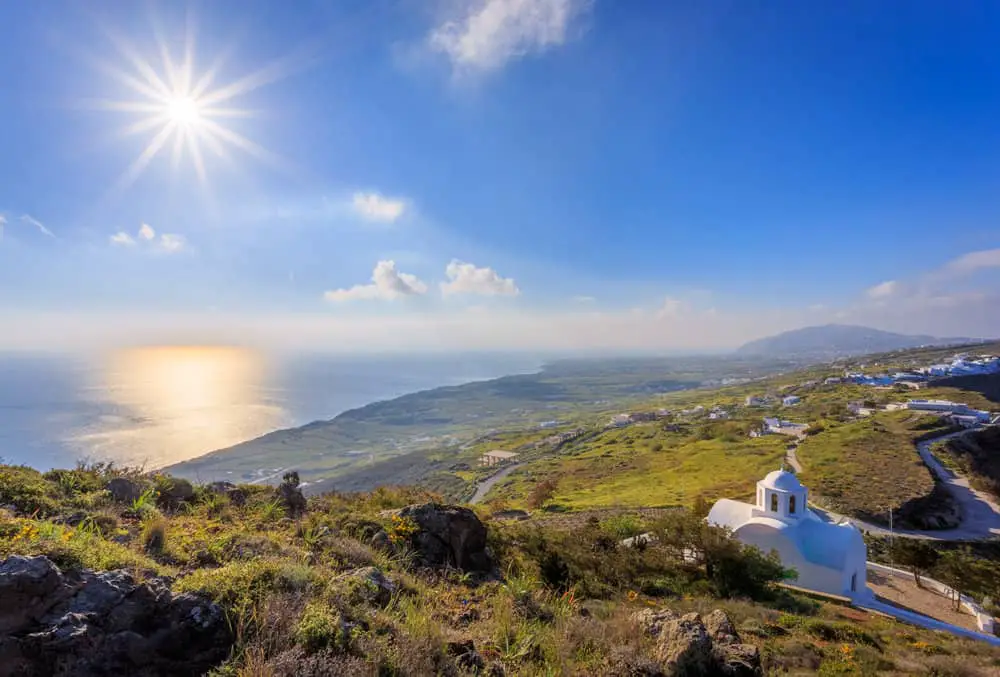
The first sunset was basically us sitting on the terrace at our hotel – it was that easy. But sunrises were about getting out and about early.
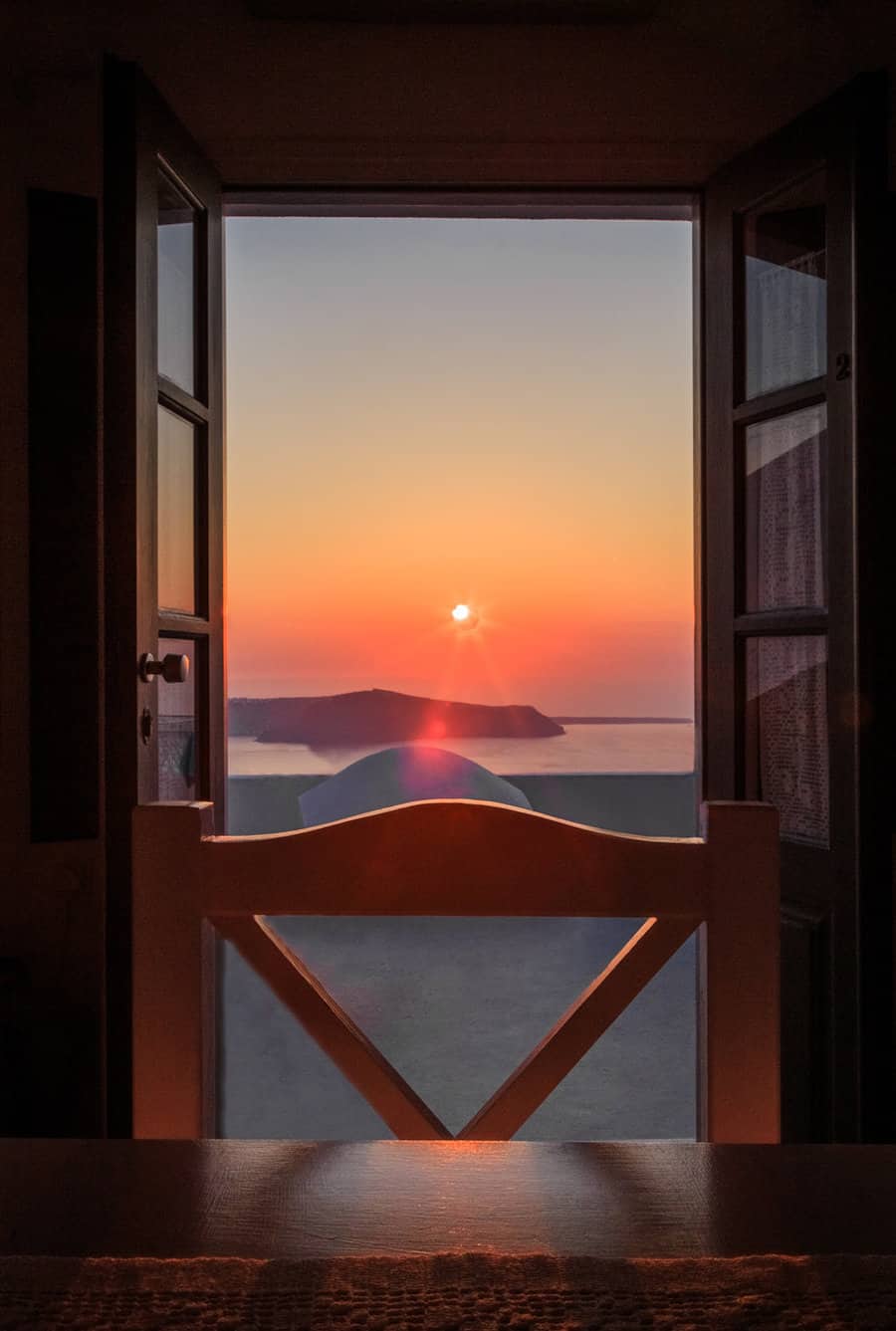
OK it was not by luck that this was the view from our room! My wife plans things. Like this room.
But I hope you get the point – find your own compositions without having other peoples work in your head.
13 – Practice, practice, practice. And fail.
This is an easy one. The more you practice the better you get. This is just a fact. There is the 10,000-hour thing – that is the amount of time it takes to become proficient at something.
I don’t know who said this, but I can see the logic in it.
I have probably spent 10,000 hours in Lightroom – I don’t suggest you do that by the way. And I dread to think how many hours in Photoshop!
Here I am taking about getting out and taking photos.
And don’t be afraid of failing. Failing is one of the best ways of learning. I should know – I produced no end of rubbish when I was starting out.
Practice any type of photography that you find interesting. Don’t restrict yourself to landscapes. Try other things. If you don’t like them fine – just don’t do them any more.
Here are 14 quotes about failure from the inspirational James Dyson, which I have extracted from the website Logo Maker. I love these – they are truly inspirational. And so true.
- “I could buy companies, tart up their products and put my name on them, but I don’t want to do that. That’s what our competitors do.”
- “I made 5,127 prototypes of my vacuum before I got it right. There were 5,126 failures. But I learned from each one. That’s how I came up with a solution. So I don’t mind failure.”
- “The key to success is failure… Success is made of 99 percent failure.”
- “We’re taught to do things the right way. But if you want to discover something that other people haven’t, you need to do things the wrong way. Initiate a failure by doing something that’s very silly, unthinkable, naughty, dangerous. Watching why that fails can take you on a completely different path. It’s exciting, actually. To me, solving problems is a bit like a drug. You’re on it, and you can’t get off.”
- “Enjoy failure and learn from it. You can never learn from success.”
- “Anyone can become an expert at anything in six months, whether it is hydrodynamics for boats or cyclonic systems for vacuum cleaners.”
- “You are just as likely to solve a problem by being unconventional and determined as by being brilliant.”
- “I learned that the moment you want to slow down is the moment you should accelerate.”
- “Everyone gets knocked back, no one rises smoothly to the top without hindrance. The ones who succeed are those who say, right, let’s give it another go.”
- “It is said that to be an overnight success takes years of effort. So it has proved with me.”
- “We always want to create something new out of nothing, and without research, and without long hard hours of effort. But there is no such things as a quantum leap. There is only dogged persistence—and in the end you make it look like a quantum leap.”
- “In business you will be wrong, by and large, 50 percent of the time. The trick is to recognise when you have gone wrong and correct the damage—not to worry, at the moment of making the decision, whether it is the right one.”
- “In order to fix [something], you need a passionate anger about something that doesn’t work well.”
- “Risk aversion is a hapless approach for a company that’s hoping to develop new technology. It’s tempting in a downturn. But long-term research and development, expensive and often filled with failure as it is, is the only route to discovering it. By taking the cautious path, companies risk a drought of ideas.”
And look what happened to him…..
So crack on doing things and making mistakes – just make sure you learn from them. I have always said that how people deal with mistakes and problems is what makes them different.
14 – Choose the people whose advice you trust and stick with them
There are lots of people with lots of opinions and lots of advice. And they are all valid in their own ways.
Problem is that they all say slightly different things. As I said none of them are wrong necessarily, just different.
This piece of advice will hopefully help.
Listen to everyone and anyone you want to, and then choose the people who resonate with you.
I found myself jumping all over the place, picking up bits of advice here and there and trying to apply them.
And achieving nothing. I had an ever expanding list of things to do, many of which conflicted with each other, making life even more difficult and confusing.
I have now narrowed down to a small number of people whose opinions have proved sound and relevant to me over the years.
Of course you have to spread the net wider to start with to find the people you want to focus in on.
And as I said somewhere else, if you pick up a piece of advice that is useful to you please use it. That was another mistake I made over and over.
These days I act on things I learn whenever I can.
To digress slightly, I have Post It pads in my car, and always have a notebook with me. Anything that I want to remember I write down, and later add to my iPhone in an App called To Do by Zenkit.
Later I sort all these notes and add them to Evernote.
Zenkit and Post It pads are the capture points – I find that once I have captured a thought it stops cluttering my already confused head. Evernote is where I make sense of things. (I have invested in Evernore Premium, meaning I can access the same info on my PC and mobile devices).
Check out the book How to be a Productivity Ninja by Graham Allcott – I listened to this whilst driving around – see below – and have actioned many of the excellent ideas in that book.
15 – Listen to podcasts
I recommend these. My favourites shift over time, but these are my favourites at the moment
- Peta Pixel
- The Togcast
- The Grid
- This Week in Photo
- The No Name Photo Show
- Six Figure Photography
- He Shoots He Draws
- The Business of Photography
None photography podcasts that I enjoy
- The Solopreneur Hour
- Ask Pat 2.0
- The Blogging Millionaire
- Smart Passive Income
- Online Marketing Made Easy
- Superfast Businesss
- BBC Friday Night Comedy
- The Danny Baker Show
- Flintoff, Savage and the Ping Pong Guy
- Test Match Special
- Tailenders (I am a massive cricket fan)
I do a lot of driving, and rather than this being dead time I use the time to learn lots and lots and lots.
Some of these I listen to all of, some I listen to part of, some the subject is of no interest. It just depends. But if a podcast is not of interest to me I just delete it straight away and move on.
And my favourites have shifted over time – I now am listening more to podcasts on entrepreneurship, business development – that kind of thing.
I have cut down the photography podcasts quite a lot – I think I overdid them a couple of years ago.
Don’t necessarily restrict yourself to podcasts about what you are interested in – you can learn things from any good photography podcast. The example here is The Business of Photography Podcast. This is mainly about wedding and portrait photography, not my bag at all. Some episodes I don’t listen to at all, but I give them a try first as there are often little gems within them that I have found incredibly useful.
If you are new to podcasts try the ones listed above, and anything else that you find, and give them a go. You will soon find the ones that are relevant to you.
I also listen to podcasts when I am cutting the grass. Peta Pixel podcast has the best audio quality, so I save them for the lawn mowing. Sure you are delighted to hear that Sharkey!
And going back to the point about getting your photos critiqued, check out the website and blind photo critiques on The Grid – it is great to hear Scott Kelby and guests giving their honest opinions.
Talk about efficiency!
And coming soo will be my Photography Explained Podcast!
16 – Start a blog
Write about your experiences. Writing is a great way of capturing your journey, recording the good and bad, and allowing you to share your experiences not on social media but on your own part of the internet.
Be it a blog on your own website, or on a WordPress blog – just start publishing stuff on a weekly basis and you will be amazed where this takes you.
I get asked regularly to add links from old blog posts to other articles written by other people which are relevant to what my core business is – photography of the built environment in all its shapes and sizes.
If you are going to start a blog, choose a niche and stick with that – it will pay dividends in future years.
If you have any aspirations to make money from photography start a blog right now. Go on – stop reading this and do it.
How often should you write? To keep it simple try 2,000 words once a week. And stick with that. Don’t do it for a couple of months then give in – stick with it and see where it takes you. I was also a writer on Improve Photography – this would not have happened if I had not started my blog.
17 – Buy a tripod – seriously
Yep. Really. Buy a tripod. But not any tripod.
When I started off taking my photography seriously I bought a tripod, a big heavy thing with a big heavy head.
And it was heavy.
And guess what?
I left it in my car. I had so much gear in a large backpack. So much gear that the tripod was just too much.
And as a result, I only used my tripod at night. When I had to.
I have mentioned elsewhere in this post about my gear – I travel light and with my hands free.
I use my tripod for every architectural image I take. The only exception to this is when I need to use a painter’s pole to get high, or my Platypod to take a photo from the floor, or where there is just no room for my tripod, normally squeezed into a corner of a room.

For my day to day work I use a Manfrotto 190 Go tripod with X-Pro geared head. The tripod is lightweight, sturdy and easy to use. I have bigger tripods, but they are difficult to use when I am taking interior photographs, as I have to normally get back right into the corner of a room.

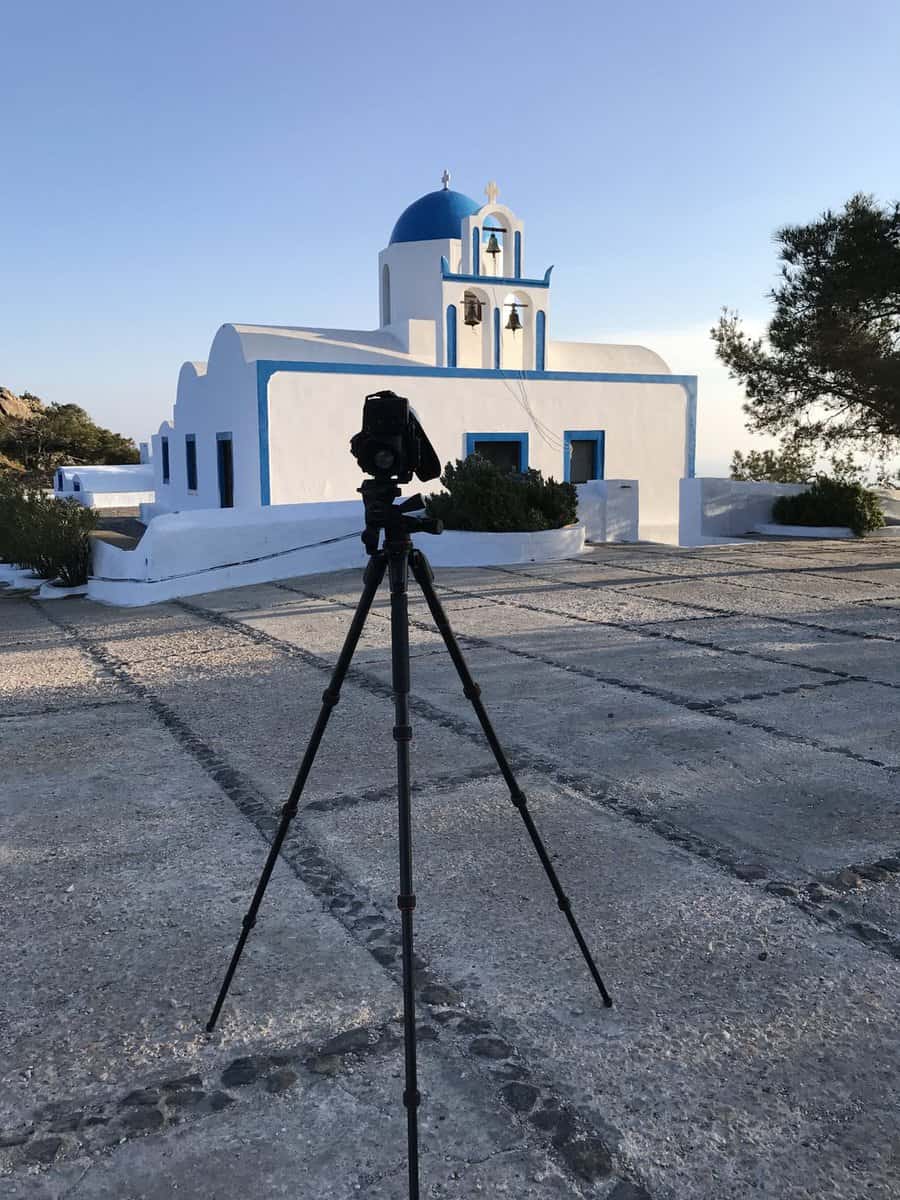
The geared head is essential for composing architectural images.
And I use exactly the same set up for landscape and travel photography. I use exactly the same gear, set up and camera settings. The only exception is when I am walking around a location grabbing shots, which is not that often.
I have found that my composition has improved significantly when I started using my tripod more. It slowed me down and made me think about each and every shot much more.
And I can stop and have a drink and a snack!!
The result of this was less images, and the ones that I took were much better than before I used the tripod.
This ties back to what I said earlier about composition and taking less photos. And thinking more about my photogrpahy.
And I also use a Manfrotto Pixi – here it is on location! This is a great mini-tripod which I take on foreign trips.
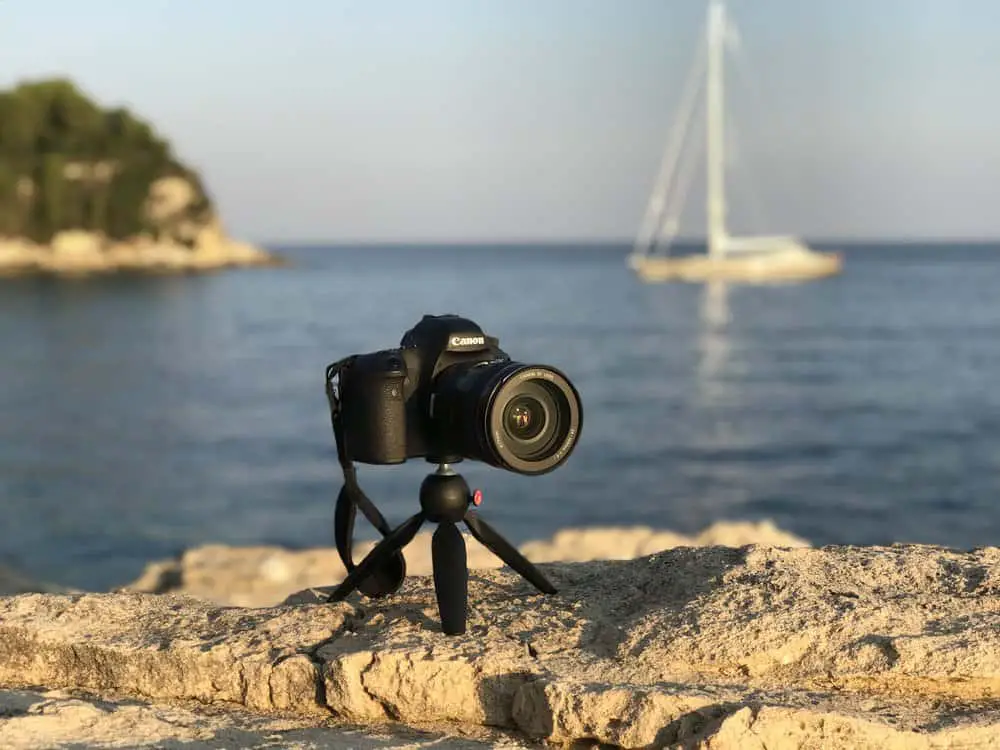
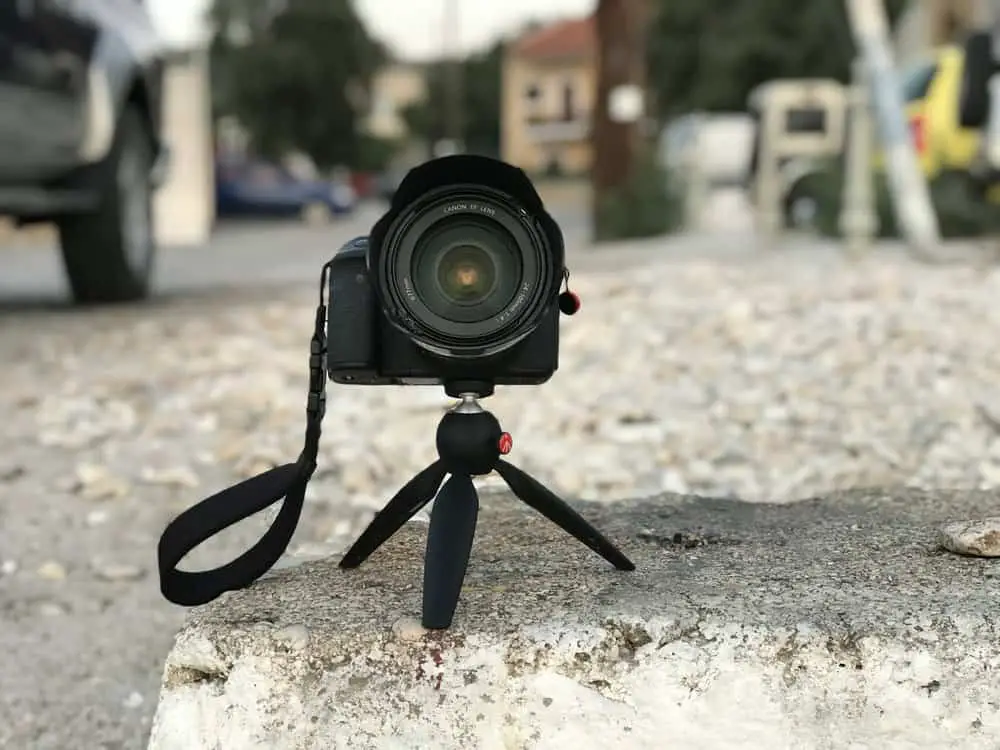
18 – Don’t worry about social media
I don’t really get social media. It has not brought me any photography work that I am aware of. And I find it quite boring.
But everyone says we all have to be on it, we all have to be seen on all the social media platforms.
Someone please tell me why?
And I don’t respond to every comment, thumbs up, like. I just post some stuff and that is pretty much it.
I do worry about my website, the content on it, and how people find my website when putting search terms into Google. This is where I put 95% of my effort – social media platforms come and go, and we do not control them.
When I say website these days I mean websites – these are where my future is, rather than on social media.
I have two other websites which I am working on.
Don’t worry about social media too much, instead focus on your own part of the internet.
19 – Follow your own mind, dreams and ambitions
Listen to the advice of the people whose opinions you value but choose your own path. And stick with your chosen path. I have too many times deviated from a chosen course of action.
I have started doing something, and then heard or read something and found something new to do.
Now I am following a planned course of actions, based on everything I have learned to date. And I am sticking to that plan, just tweaking it when I find better ways of doing things.
I set some targets for my photography business which I wrote about in the post My 9 Photography Busness Ideas You Can Steal Right Now.
Of course, things change over time – I was going to go all in with stock photography before but am now going in a completely different direction with that particular thing.
But the general principle of what I am trying to do, which to be fair has taken 10 years to produce, is the plan that I am working to.
And on that point, you have to give yourself time to figure out where you want to go with your photography.
Don’t fight for a piece of the pie, make your own pie! A quote from Sharkey James which I love.
20 – Enjoy it
Enjoy your photography. Work hard at it but enjoy it.
Even if you want to be your full time paid gig it is still something to be enjoyed. I don’t take photographs anywhere near as often as I used to. I seem to spend more time writing and responding to emails than I do taking photos.
But guess what?
When I manage to get out somewhere new at sunrise it is an absolute joy. I work on my photography business all the time, but there is nothing like being out on location at sunrise.
Like this sunrise I witnessed in Altea in Spain.
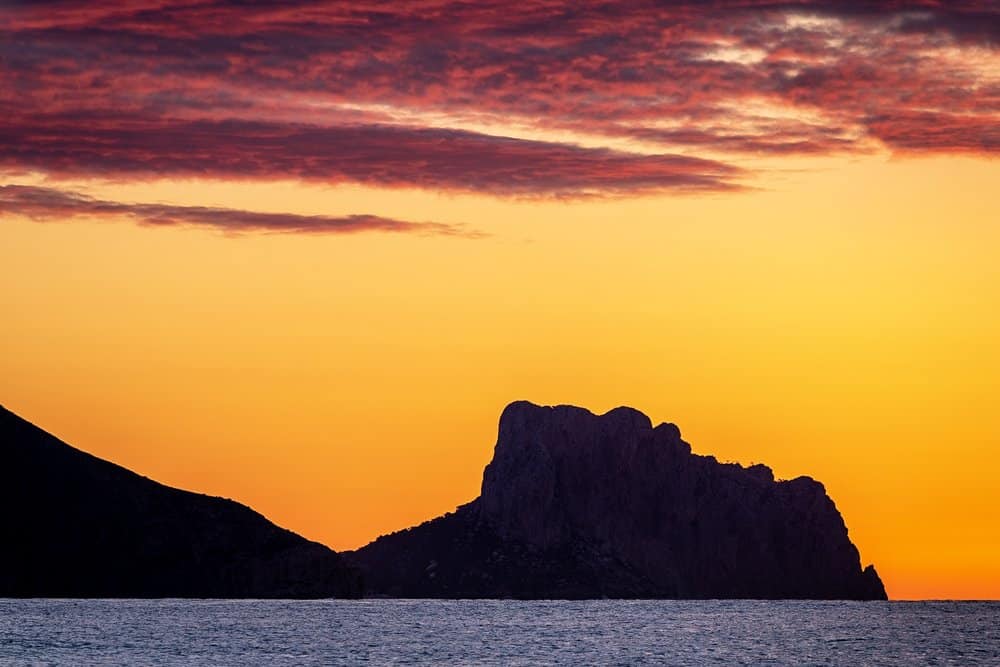
And also saw this stunning church at sunrise on another morning.
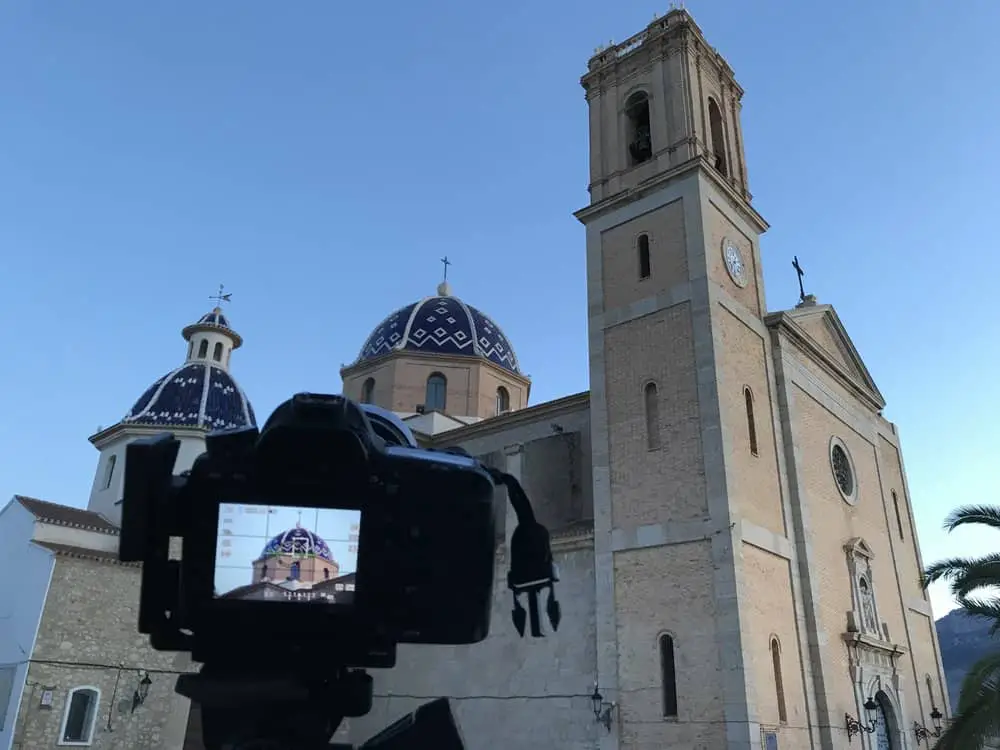
For both of these occasions there was no one else there – it was just me and the most natural thing of all, the breaking of a new day.
An event that will never happen again, and it was just me there at that time in that location.
No matter how much work I spend on my photography business that feeling never goes away – the sheer joy of watching and photographing something that will never happen again.
Enjoy your photography – it is a wonderful gift and a privilege to be a part of.
One more thing
21 – And finally that list
And these are those 10 bullet points I promised right at the beginning.
- Choose your destiny and go for it.
- Only get the gear you need.
- Don’t get any more gear.
- Have one bag you can carry comfortably.
- Get and use a tripod.
- Get out and shoot.
- Learn Lightroom.
- Practice. Fail.
- Look at your photos, learn, be critical, get critiques.
- Composition is king
And to finish
I hope you have enjoyed this post – if you have any comments or questions you can either comment on this blog post or email me at sales@rickmcevoyphotography.co.uk
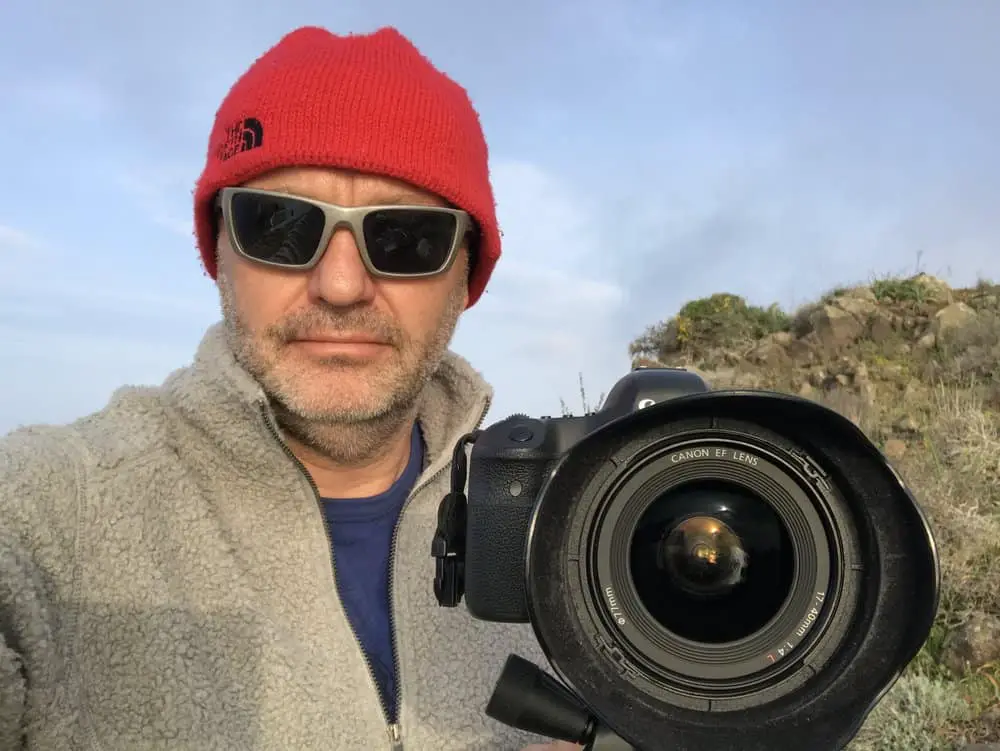
I am a photographer based in Dorset. I photograph buildings and nice places.
That’s it. No weddings. No people. No animals.
Please get in touch with any thoughts, comments, to book me or to just say hi!
And if you want to know more then just head over to my home page.
Rick McEvoy MCIOB, ABIPP
#21photographytips #photography #tips
